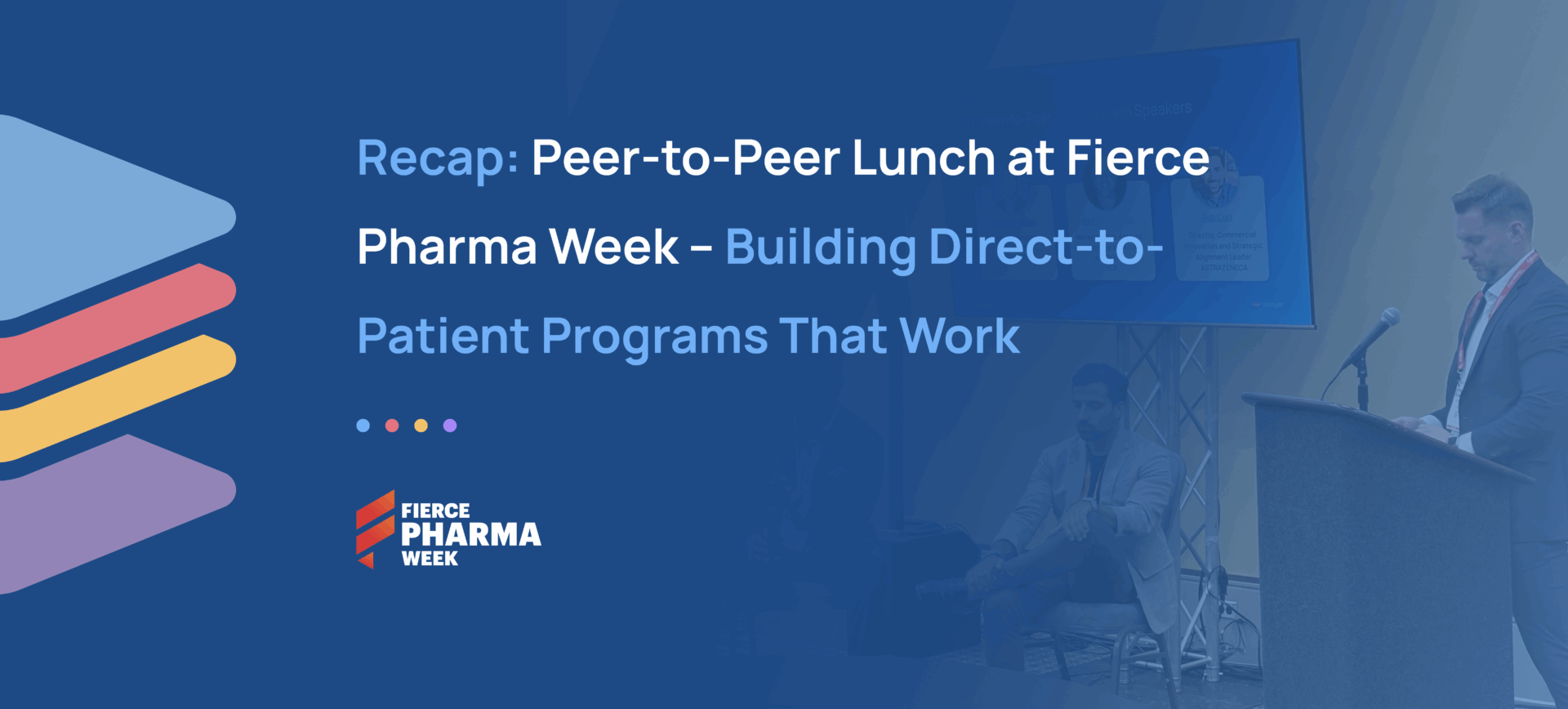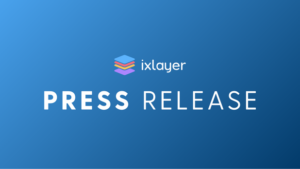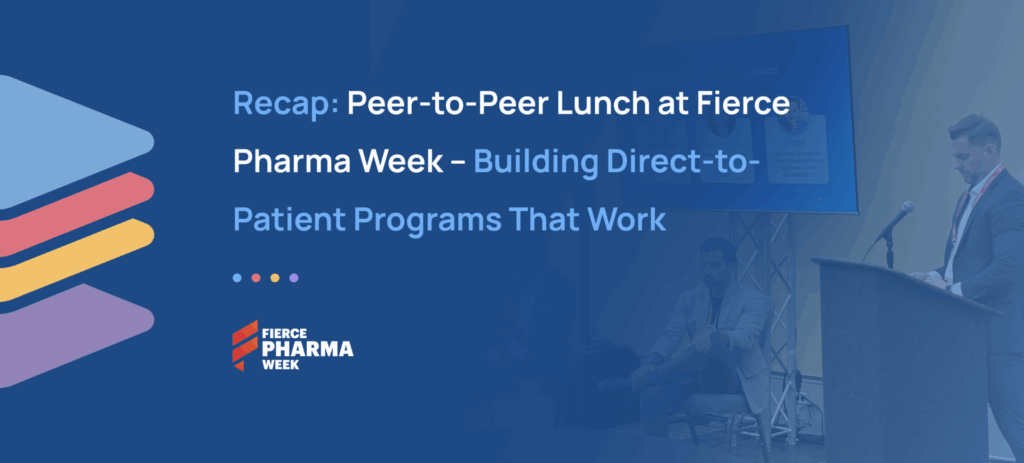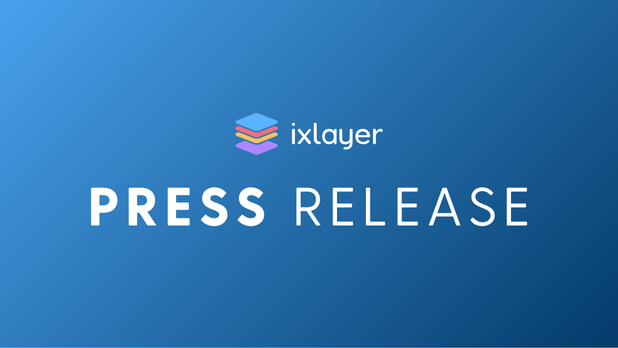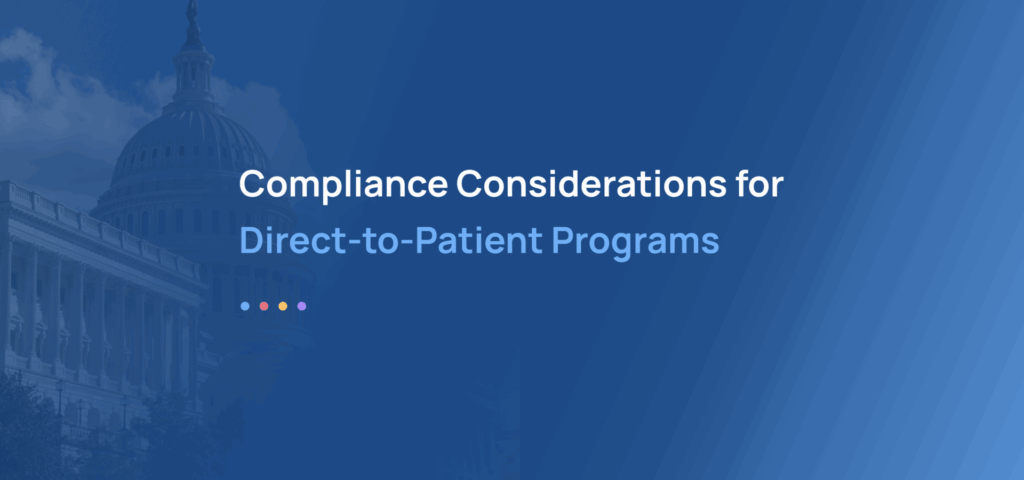Recap: Peer-to-Peer Lunch at Fierce Pharma Week – Building Direct-to-Patient Programs That Work
At this year’s Fierce Pharma Week, ixlayer hosted a peer-to-peer lunch discussion featuring Ryan Guite, National Trade Account Lead at UCB, Rob Cori, Director of Commercial Innovation at AstraZeneca, and Matthew Walsh, General Manager, Biopharma at ixlayer.
The conversation focused on the opportunities and challenges of direct-to-patient (DTP) programs, and how they can help biopharma companies reduce friction, build trust, and accelerate access to care.
Reducing friction in patient access
Ryan Guite described the structural barriers patients face in traditional channels, “Pharmacies don’t want to dispense brands. Wholesalers don’t want to buy and sell brands. Payers don’t want to put people on brands. There’s so much friction you can spend all your time battling through it, or you can open an avenue to connect directly with patients and help them get the therapy they need or deserve.”
DTP, he argued, isn’t just a marketing tactic; it’s a way to create a near-frictionless pathway between patient and therapy.
No one-size-fits-all approach
Rob Cori emphasized that each disease area presents different obstacles, requiring tailored program design, “If you’ve seen one program, you’ve seen one program. Severe asthma, cardiovascular disease, epilepsy, each has different challenges. What works in one space doesn’t necessarily translate to another.”
Guite agreed, pointing to the example of epilepsy, where patients’ long road to seizure control creates deep brand loyalty and sensitivity to changes in therapy.
Starting with screening and education
Panelists noted that programs must begin earlier than access and adherence. Screening and education are often the most critical gaps.
“Patients can’t get treatment if they’re not diagnosed, and they can’t get diagnosed if they aren’t screened,” Cori said. “That starts with education, making sure patients and providers understand the risks and the importance of testing.”
DTP models that incorporate education, at-home or local diagnostics, and timely follow-up create a stronger, more trusted patient journey.
Building control and clarity
Both speakers highlighted that DTP programs allow manufacturers to exert more control over the patient experience, without bypassing providers.
Guite explained, “In a fragmented world, wholesalers and payers make decisions in their own interest. Through a DTP program, the manufacturer can decide who to partner with, how to educate patients, and how to ensure timely access, all while staying within compliance.”
Compliance and cross-functional alignment
The panel also addressed how to keep programs on track internally.
- Bring compliance and legal in early, not for approvals, but for reactions and partnership.
- Explain the “why” behind a program, so oversight teams understand the patient need rather than just the operational mechanics.
- Keep the patient as the true north. Programs are harder to challenge when their benefits to patients are clear.
As Guite put it, “With regards to compliance, keeping legal looped in and at the table throughout the process is key. We continue to learn, although staying moral, ethical, and legal allows us to not let great get in the way of good.”
Pilot, learn, and adapt
Both panelists urged organizations to think iteratively. Pilots should be small, collaborative, and fast, with clear goals for what success looks like in that therapeutic area. Innovation, they stressed, is not about chasing the “shiny new thing” but about removing specific barriers that matter most to patients.
Looking ahead
The lunch reinforced a consistent message: DTP programs are here to stay, but they must be patient-centered, disease-specific, and compliant by design. From reducing friction and expanding education to integrating diagnostics and telehealth, the opportunities are real—but so are the regulatory expectations.
To explore ixlayer’s perspective on building compliant, scalable DTP models, read our Compliance Point of View.
About ixlayer
ixlayer has the only end-to-end, direct-to-patient platform built for biopharma and optimized for patient choice. We help biopharma companies connect with patients from testing to treatment with speed, transparency, control and impact.
